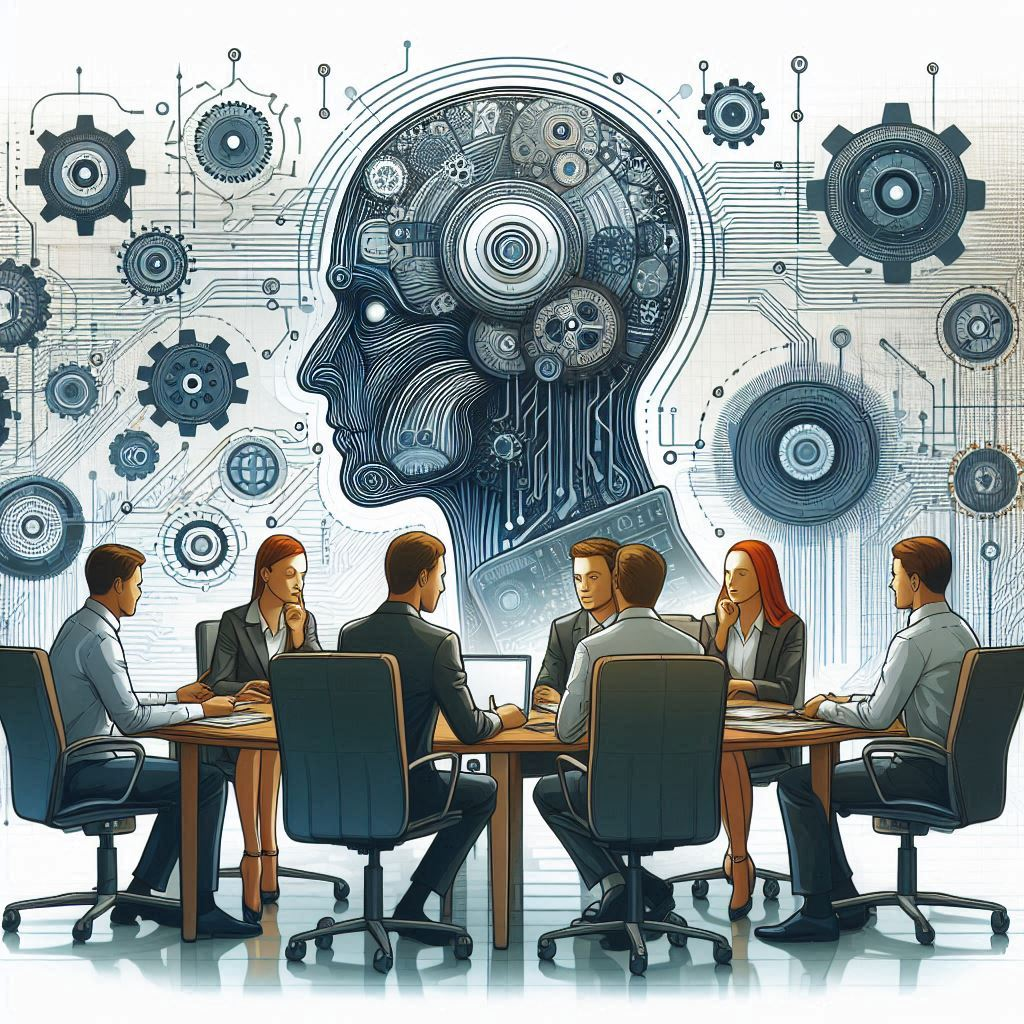Will Artificial Intelligence render recruiters obsolete, or will it elevate them to next-level hiring superheroes?
As governments and corporations worldwide ramp up AI investments and upskilling programs, this question looms larger than ever.
On one hand, AI-driven platforms promise remarkable speed and accuracy. On the other, skeptics worry about losing the critical human element in the hiring process.
In this post, we’ll explore both sides of the debate—showing why it’s not solely about technology, but also about courage, adaptability, and a bold vision that could reshape recruitment across the globe.
Background
The global recruitment landscape has evolved rapidly over the last decade, transitioning from manual processes to sophisticated human resource technology solutions. Recent statistics highlight this shift:
- AI Adoption in Recruiting
-
- The 2023 Linkedin Future of Recruiting Report indicates that 70% of recruiting professionals worldwide plan to implement or significantly increase the use of AI-based solutions within the next five years.
- Time-to-Hire Reduction
-
- According to the Deloitte Global Human Capital Trends 2021 report, organizations implementing AI in their recruitment processes have seen up to a 31% reduction in time-to-hire, significantly enhancing operational efficiency.
These data points illustrate the growing acceptance of AI in recruitment. It’s akin to standing at the edge of a canyon with a promising future on the far side. Either you can retreat in uncertainty, or you can muster the courage to build a bridge—unlocking opportunities that might redefine the way we hire on a global scale.
Promise vs. Peril of AI in Recruitment
Embracing artificial intelligence empowers organizations to deploy automation in recruitment—from resume parsing to interview scheduling and beyond. This recruitment intelligence promises:
- Speed: AI-driven screening can handle hundreds of résumés in minutes.
- Accuracy: Data analytics help pinpoint the most suitable candidates, minimizing guesswork.
- Efficiency: Automating mundane tasks frees recruiters to focus on strategic, people-oriented activities.
Nonetheless, some observers worry about losing the personal side of human resource technology. Could algorithms overlook the intangible qualities that make certain candidates standout? Might an overreliance on machine learning inadvertently homogenize the hiring process?
When approached with courage in business, these concerns serve as reminders that AI should remain a tool—not a wholesale replacement—for skilled recruiters. Properly integrated, it amplifies human expertise rather than supplanting it.
Insights from HR Leaders
Global HR experts hold a range of views on this recruitment evolution.
Leena Nair, CEO of Chanel and former Chief Human Resources Officer at Unilever, highlights how AI can support more empathetic hiring processes:
“AI is transforming how we identify and engage talent, but it’s crucial to combine these tools with genuine empathy. Technology can help us see more candidates, yet only human insight can understand their deeper motivations and potential.”
Meanwhile, Laszlo Bock, former Senior Vice President of People Operations at Google and now co-founder of the HR tech firm Humu, underscores the need for human oversight:
“Automation in recruitment can be a game-changer for speed and scalability. However, without human judgment and ethical guidelines, we risk creating a system that values efficiency over humanity. Recruiters must remain the stewards of fairness and empathy.”
This balanced perspective captures the worldwide sentiment: while some champion AI’s ability to streamline hiring, others caution that human intuition and moral responsibility are irreplaceable.
The Changing Face of Global Recruitment
Around the world, both public and private sectors are increasingly investing in AI. Funding and incentive programs are encouraging organizations of all sizes to experiment with HR tech platforms. A snapshot of the ongoing transformation includes:
- HR Tech Startup Boom:
According to Tracxn’s global HR Tech report, hundreds of AI-focused HR tech startups have emerged internationally since 2020. These solutions address a broad spectrum of recruitment challenges—from automated screening and skill mapping to advanced workforce analytics. - Global Competitiveness:
As companies adopt AI-driven hiring solutions, they strive to tackle long-standing obstacles like skill gaps and time-consuming manual processes. Embracing AI can also open up talent pools beyond traditional geographic constraints, driving diversity and inclusivity in global workforces.
For recruiters who’ve relied on traditional methods, these rapid changes may be daunting. Yet the momentum is undeniable: HR transformation is underway, and those ready to adapt stand to benefit the most.
Future Vision: AI + Human Synergy
For recruitment teams willing to take a leap of faith, AI can be a powerful ally rather than a threat. By automating repetitive tasks, recruiters can dedicate more energy to relationship-building, employer branding, and long-term strategic planning.
- Real-Time Analytics: Imagine having instant insight into job market trends and candidate behaviors, allowing you to refine hiring strategies on the fly.
- New Roles & Specializations: Positions like AI Recruitment Strategist or HR Data Analyst will bridge machine-driven processes with the vital human touch, ensuring ethical and effective usage of AI tools.
It’s important to remember that cultural fit, soft skills, and personalized candidate experiences remain uniquely human domains. AI enriches the process by enabling efficiency and data-based precision, but it doesn’t replace the empathy or nuanced understanding that a human recruiter provides.
Real-Life Case Study: Unilever’s AI-Driven Hiring Approach
A shining example of AI-powered recruitment in action comes from Unilever, the global consumer goods powerhouse. As documented in “Harvard Business review’s “Inside Unilever’s Radical hiring Experiment” the company overhauled its early-career recruitment strategy with platforms like Pymetrics and HireVue:
- Automated Screening & Assessment
Applicants completed AI-driven online games and assessments to measure cognitive, emotional, and social attributes—quickly filtering out mismatched candidates. - AI-Assisted Video Interviews
Shortlisted candidates underwent video interviews analyzed by AI, which evaluated verbal and non-verbal cues. This significantly streamlined interview processes while capturing essential data on communication skills and personality traits. - Impressive Outcomes
-
- Faster Hiring: Unilever shrank its early-career hiring window from four months to four weeks.
- Broader Talent Pool: By minimizing human bias and eliminating location barriers, the company attracted a more diverse range of applicants.
- Essential Human Oversight: Final-stage interviews were still conducted by managers to ensure AI-driven insights were balanced with personal judgment.
In this case, AI did not replace recruiters. Instead, it freed them to focus on higher-value interactions—a blueprint for harnessing AI’s capabilities while preserving a decisive human role in recruitment.
As AI drives a new era in recruitment worldwide, one pressing question remains: Will you use this revolution to elevate your recruiting practice, or watch from the sidelines as others forge ahead?
The actions you take today can reshape not only your professional path but also the global recruitment landscape at large. Perhaps you’ll incorporate advanced human resource technology into your daily workflow, or champion AI skills development on your team.
Maybe you’ll even start your own AI-driven recruitment venture, seizing the transformative momentum of this innovative field. Remember, fortune typically smiles on those bold enough to act decisively.
We want your perspective! Share your experiences, insights, or concerns in the comments.
How will you balance the powers of AI in recruitment with the irreplaceable human element?
Is your organization prepared to embrace recruitment intelligence?
Join the discussion and help define the next chapter of global hiring. After all, courage in business is about more than just imagining change—it’s about pursuing it fearlessly, regardless of the risks.
References
- LinkedIn Future of Recruiting Report 2023
- Deloitte Global Human Capital Trends 2021
- Tracxn – HR Tech Startups
- Harvard Business Review: “Inside Unilever’s Radical Hiring Experiment”


